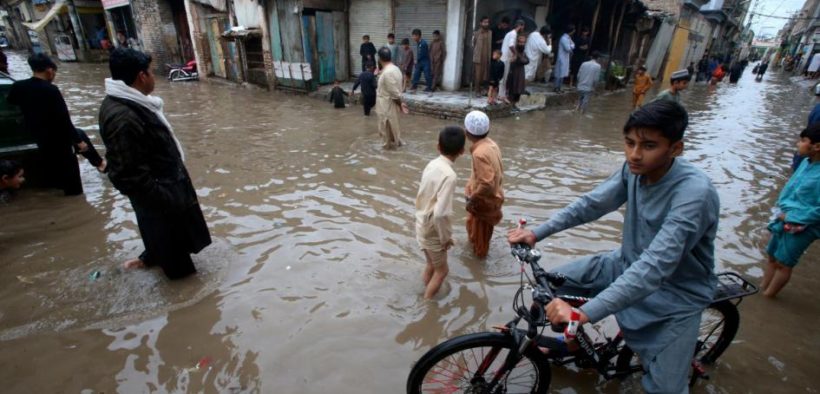April Rainfall Report Record Levels in Pakistan Raise Climate Concerns

April rainfall was recorded at 59.3 millimeters, “excessively above” the normal average of 22.5 millimeters, Pakistan’s metrology department said late Friday in its monthly climate report.
There were at least 144 deaths in thunderstorms and house collapses due to heavy rains in what the report said was the “wettest April since 1961”.
Pakistan is increasingly vulnerable to unpredictable weather, as well as often destructive monsoon rains that usually arrive in July.
In the summer of 2022, a third of Pakistan was submerged by unprecedented monsoon rains that displaced millions of people and cost the country $30 billion in damage and economic losses, according to a World Bank estimate.
“Climate change is a major factor that is influencing the erratic weather patterns in our region,” Zaheer Ahmad Babar, spokesperson for the Pakistan Meteorological Department (PMD), said while commenting on the report.
While much of Asia is sweltering due to heat waves, Pakistan’s national monthly temperature for April was 23.67 degrees Celsius (74 degrees Fahrenheit) 0.87 degrees lower than the average of 24.54, the report noted.
The highest rainfall was recorded in the southwestern province of Balochistan with 473 percent more than average.
South Asian nation has the world’s fifth-largest population
The South Asian nation has the world’s fifth-largest population and is responsible for less than one percent of global greenhouse gas emissions, according to officials, but is highly vulnerable to extreme weather exacerbated by global warming.
The largest death toll was reported in northwestern Khyber Pakhtunkhwa, where 84 people died, including 38 children, and more than 3,500 homes were damaged.
Last month UNICEF called for urgent action to save children on the frontlines of climate change.
“Children in Pakistan are at “extremely high risk” of the impacts of the climate crisis,” the UN agency said in a statement.
“Despite significant aid efforts, 9.6 million children were still in need of humanitarian assistance in flood-affected areas by December 2023,” it added.
In some areas of Punjab, the most populous province and the breadbasket of the country, heavy rains and hailstorms caused damage to the wheat harvest, a staple food source.








